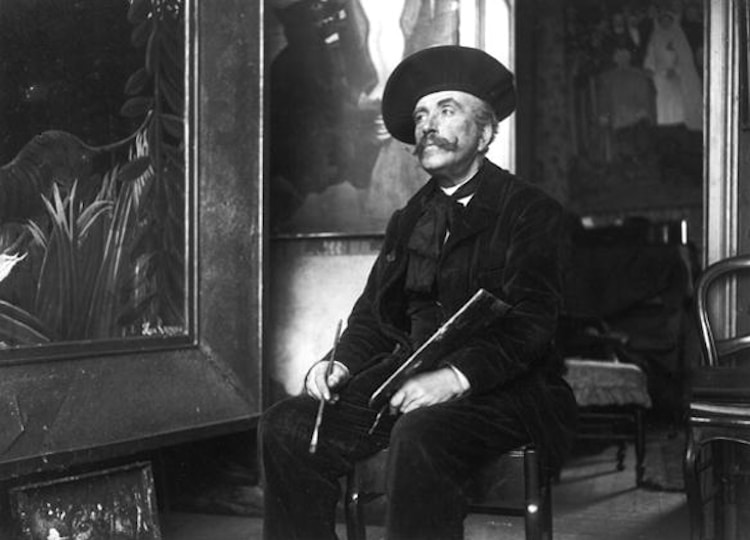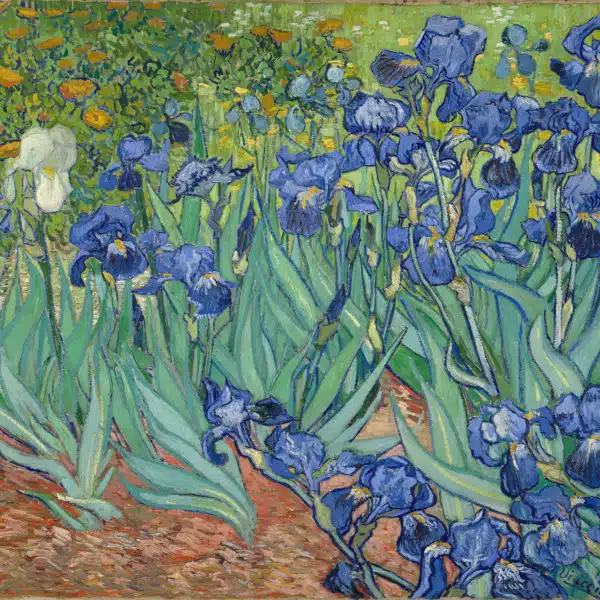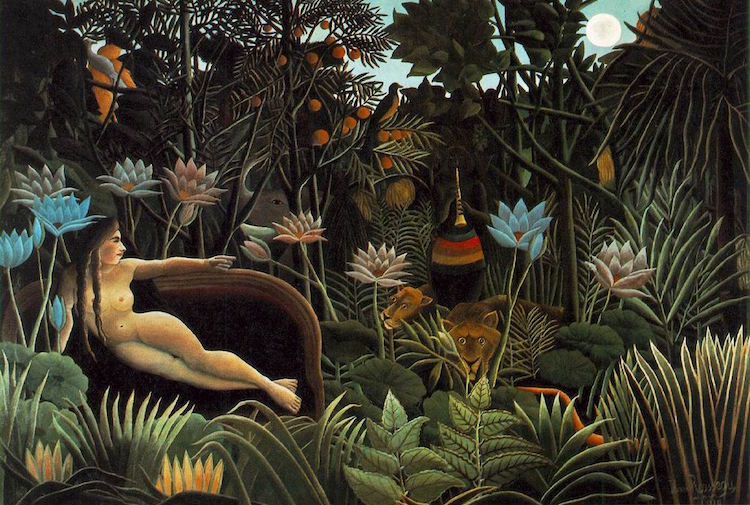
“The Dream” (1910) (Photo: Wikimedia Commons [Public Domain])
Who Was Henri Rousseau?
Born on May 21, 1844, Rousseau grew up in Laval, a small town in northwestern France. He and his family moved to Angers in 1861, and Rousseau found a job as a clerk for the local bailiff. This role gained him the lifelong nickname Le Douanier, a humorous term for his occupation as a toll and tax collector. Although he didn’t pursue painting full-time until his 40s, it is quite possible that he practiced drawing during slow days at the office because he produced his first artworks around this time.
Myself, Rousseau's Self Portrait
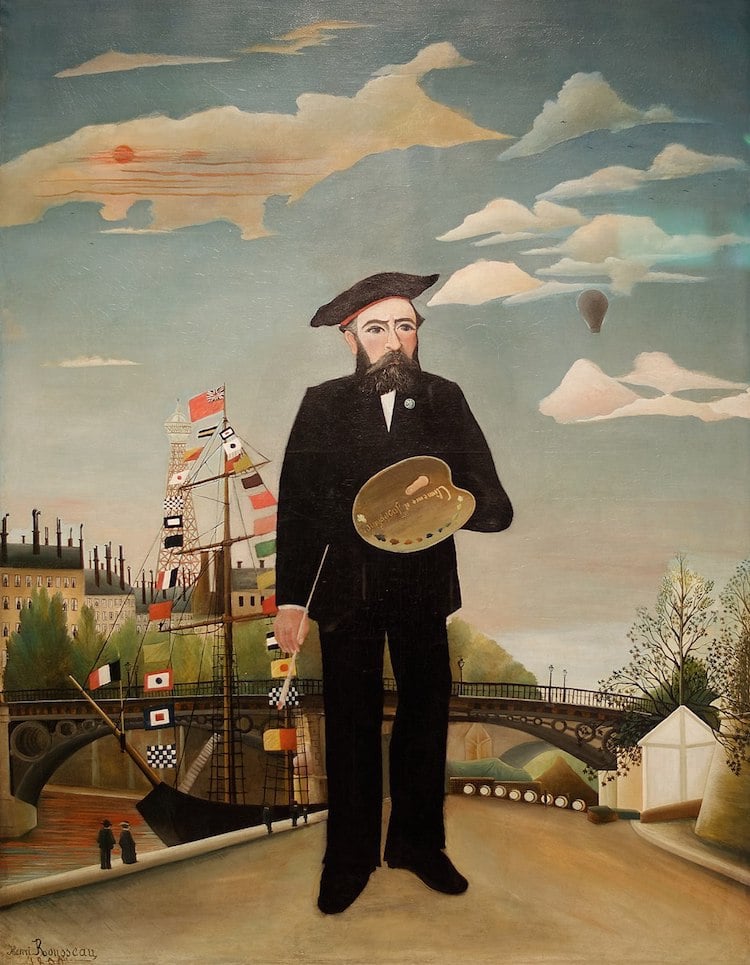
“Myself” (1890) (Photo: Wikimedia Commons [CC BY-SA 4.0])
The painting's hybrid genre—somewhere between a portrait and a landscape—was disliked by critics, but Rousseau proudly claimed it as his own. He once said, “I am the inventor of the portrait landscape, as the press has pointed out.”
What is Naïve Art?

“Exotic Landscape” (1908) (Photo: Wikimedia Commons [Public Domain])
Rousseau was a key figure in the movement and developed his own style that many thought reflected his lack of academic training. Featuring incorrect proportions, one-sided perspective, and unnatural colors, Rousseau’s body of work was criticized by many. For other people, however, it evoked a sense of mystery and eccentricity. In fact, some art historians say that the term naïve art originated in 1885 when artist Paul Signac set about organizing exhibitions of Rousseau’s work in a number of esteemed galleries.
Defying Criticism
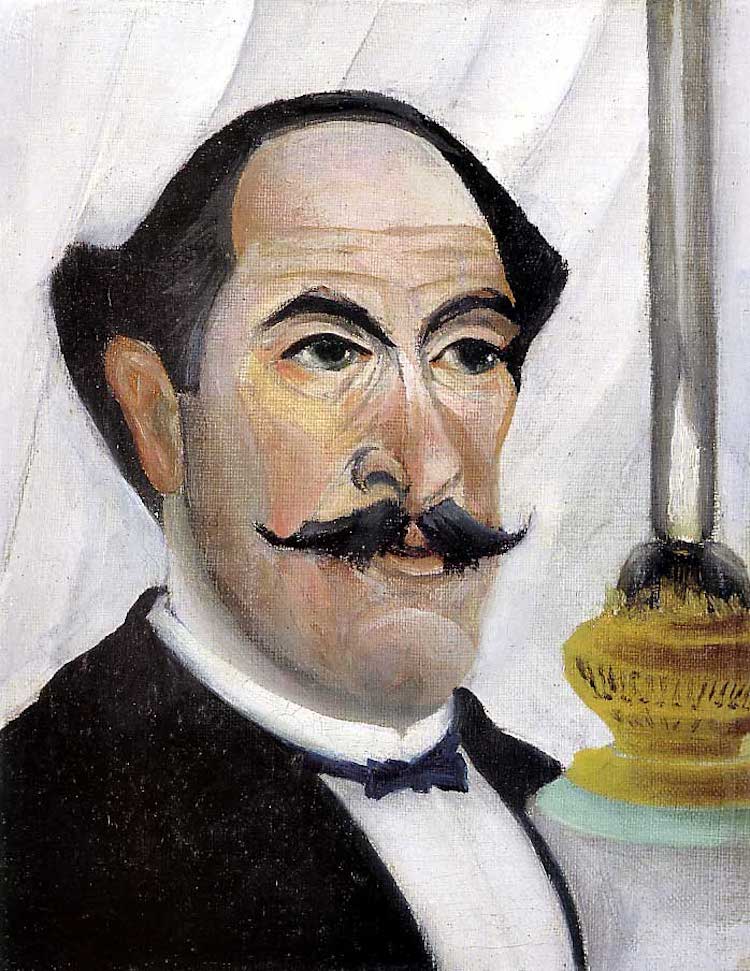
“Self-portrait of the Artist with a Lamp” (1903) (Photo: Wikimedia Commons [Public Domain])
Rousseau began taking his art seriously in his 40s, and by age 49 he retired from his job as a tax collector to work on his paintings full-time. The artist claimed he needed “no other teacher than nature,” and pasted all his negative reviews into his personal scrapbook.
Rousseau's Most Famous Jungle Works
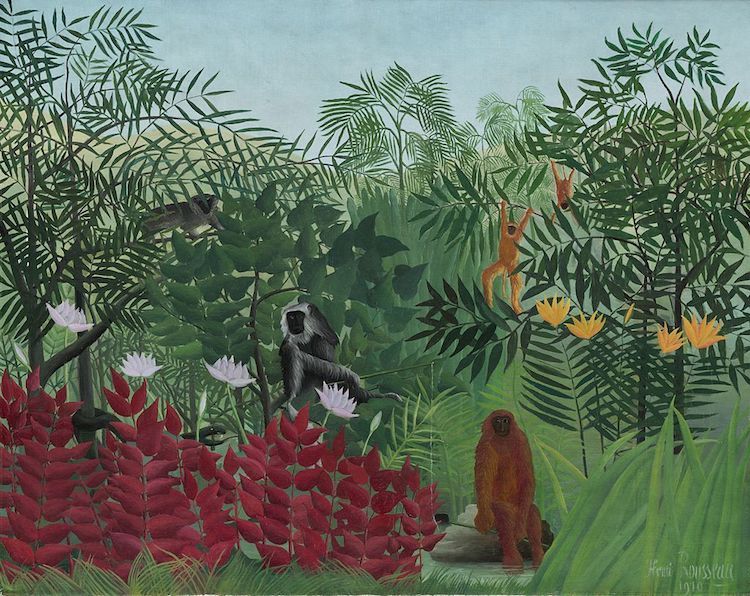
“Tropical Forest with Monkeys” (1910) (Photo: Wikimedia Commons [Public Domain])
Surprised! Tiger in a Tropical Storm
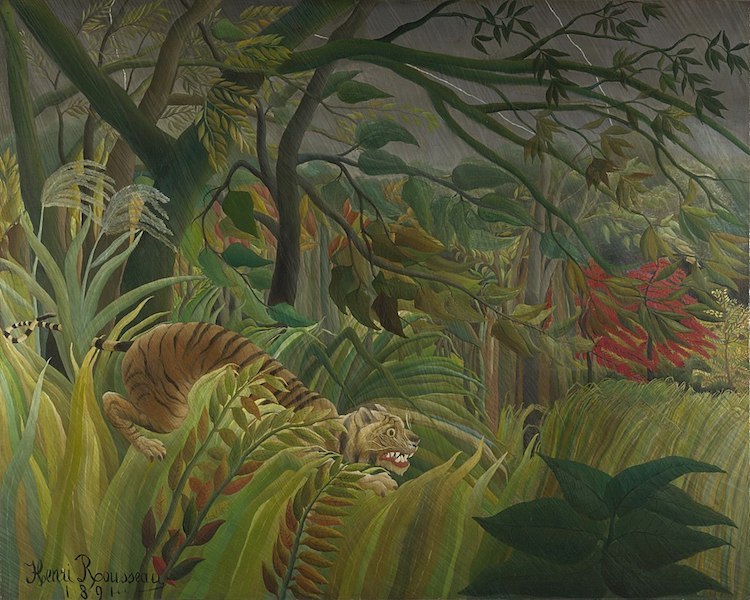
“Surprised! Tiger in a Tropical Storm” (1891) (Photo: Wikimedia Commons [Public Domain])
The Hungry Lion Throws Itself on the Antelope
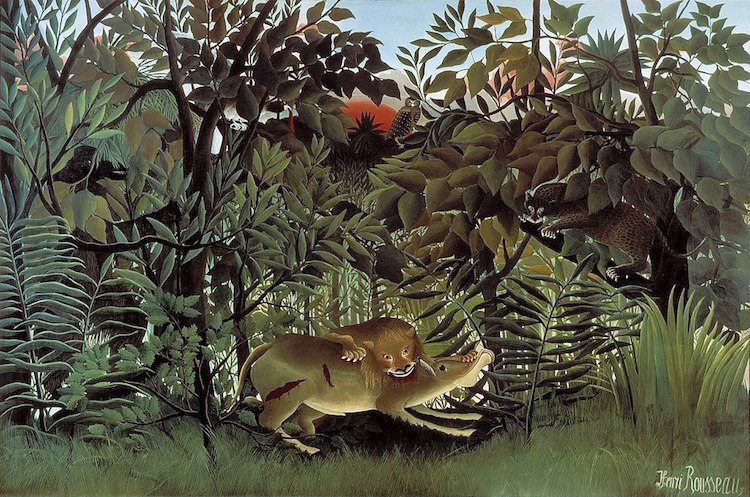
“The Hungry Lion Throws Itself on the Antelope” (1905) (Photo: Wikimedia Commons [Public Domain])
Rousseau wrote the following caption to accompany the painting: “The hungry lion, throwing himself upon the antelope, devours him. The panther stands by awaiting the moment when he, too, can claim his share. Birds of prey have ripped out pieces of flesh from the poor animal that sheds a tear!”
Displayed alongside works by Henri Matisse and André Derainat at the Salon d'Automne in 1905, some critics compared The Hungry Lion to cave paintings. However, it was positioned among the leading artists of the avant-garde (whose expressive use of vibrant colors became known as Fauvism) and was backed by his admirers, Pablo Picasso and Guillaume Apollinaire.
The Legacy of Henri Rousseau
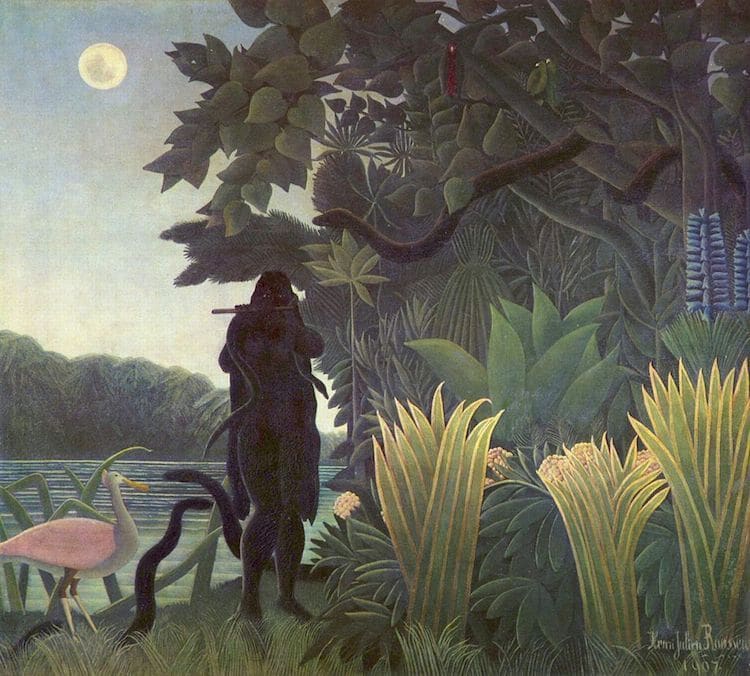
“The Snake Charmer” (1907) (Photo: Wikimedia Commons [Public Domain])
Rousseau's friends and fellow artists came together to promote his legacy after his death. Artist Max Weber introduced Rousseau's work to American audiences with a New York exhibition in 1910 followed by a memorial exhibition organized by Robert Delaunay at the Salon des Indépendants.
Eventually, Rousseau’s painting style resonated with “primitivism” that was embraced by early-20th-century modern artists such as Picasso and Wassily Kandinsky; they looked to art forms such as African tribal masks for inspiration. Rousseau was also hailed as a “proto-Surrealist” by André Breton because of the dream-like quality his paintings held.
Rousseau’s body of work also influenced many modern artists in other fields. American poet Sylvia Plath referenced his paintings The Dream and The Snake Charmer in her poetry. Additionally, the song The Jungle Line, by Joni Mitchell, is based on a Rousseau painting.
Related Articles:
9 Famous French Painters You Should Know
Exploring the Vision and Diverse Styles of Post-Impressionism Pioneers
13 Revolutionary Art Movements That Have Shaped Our Visual History
